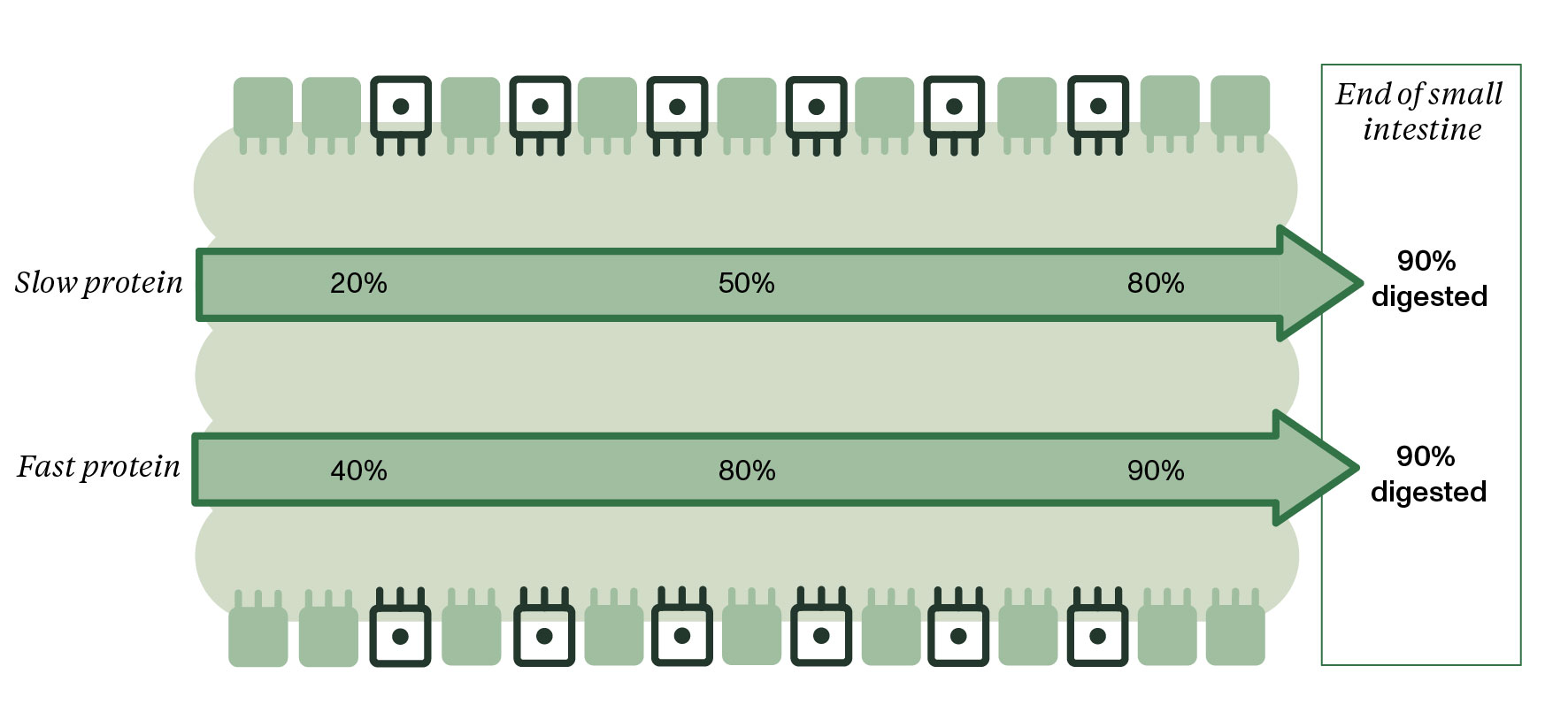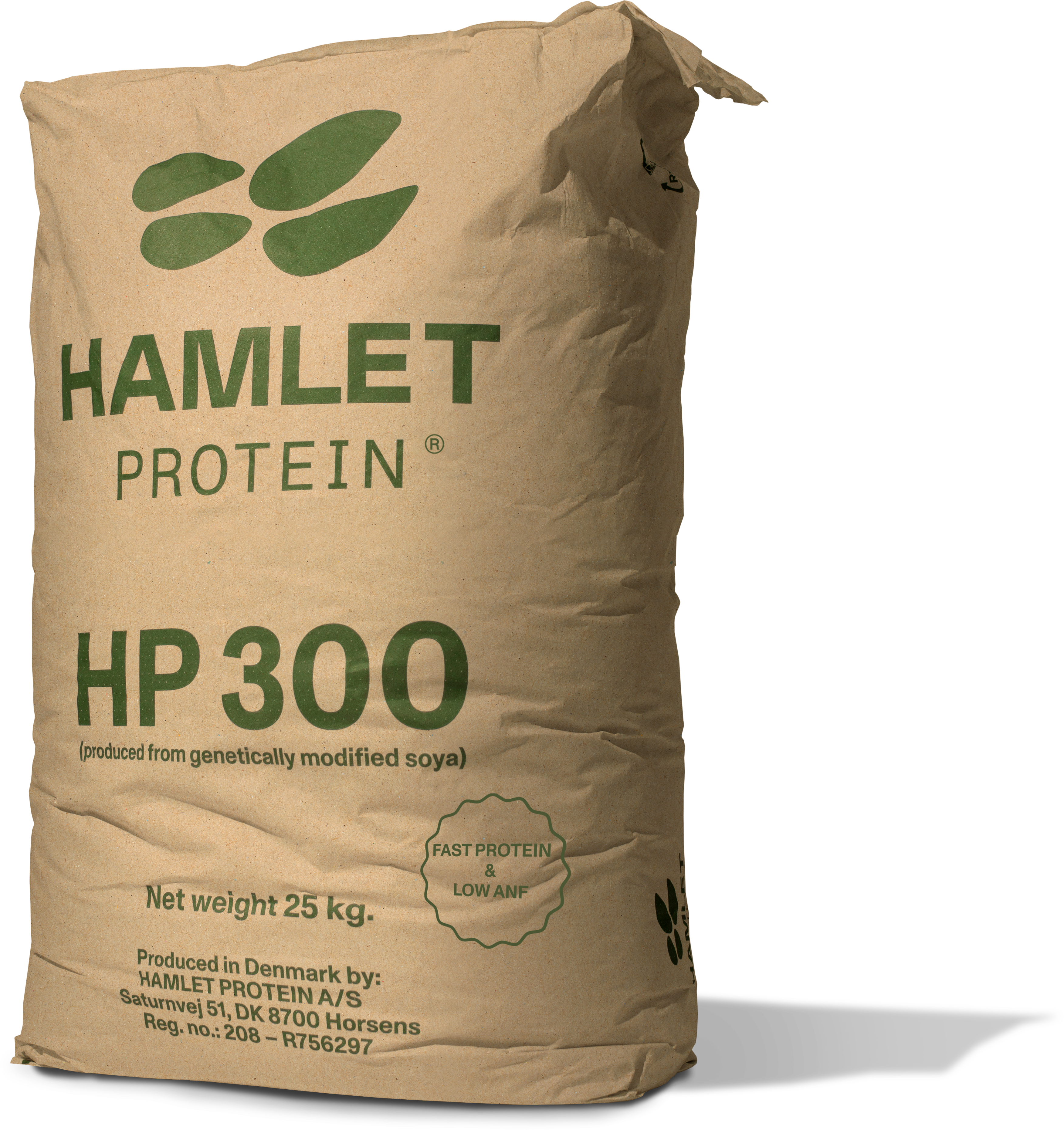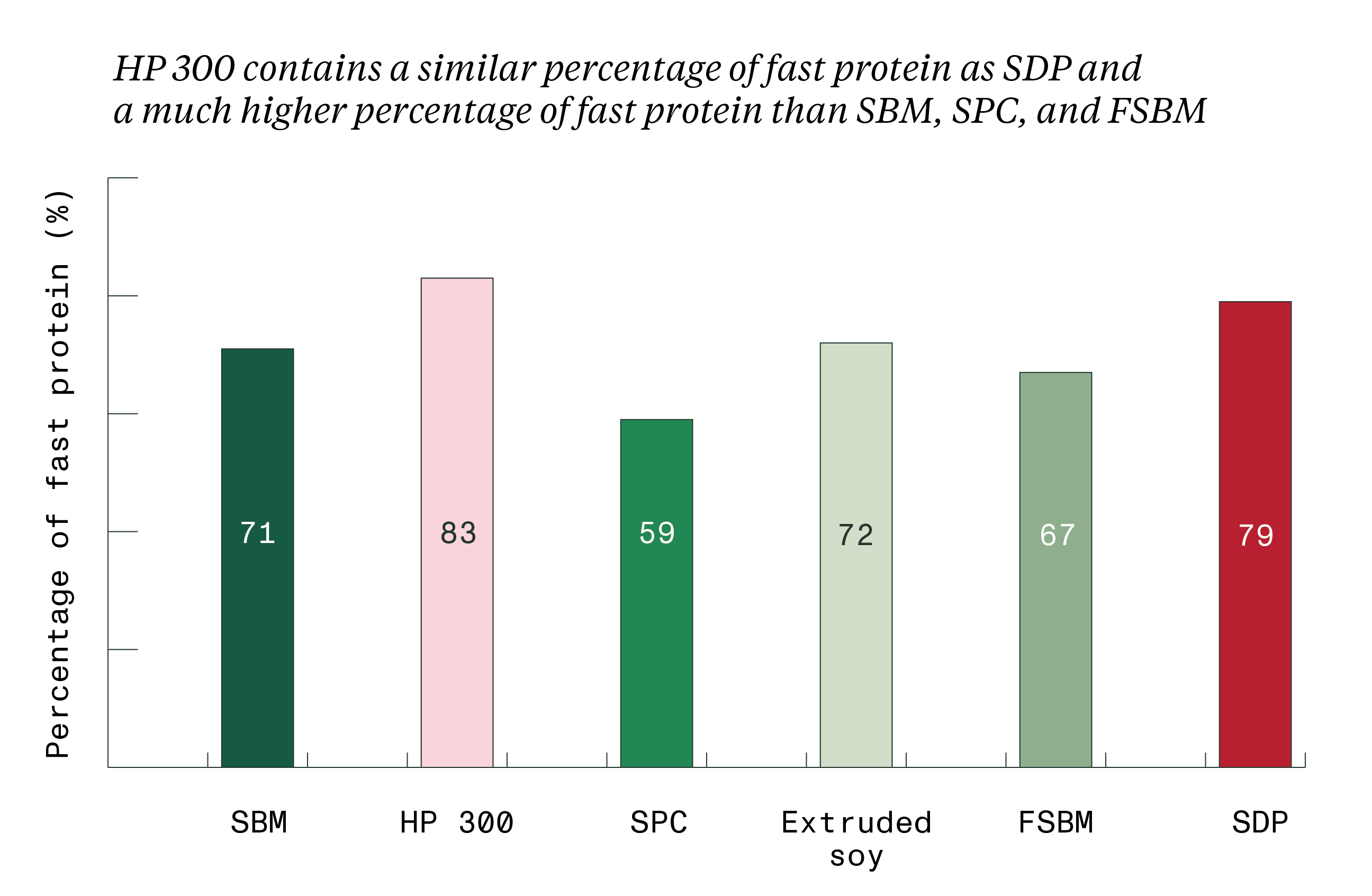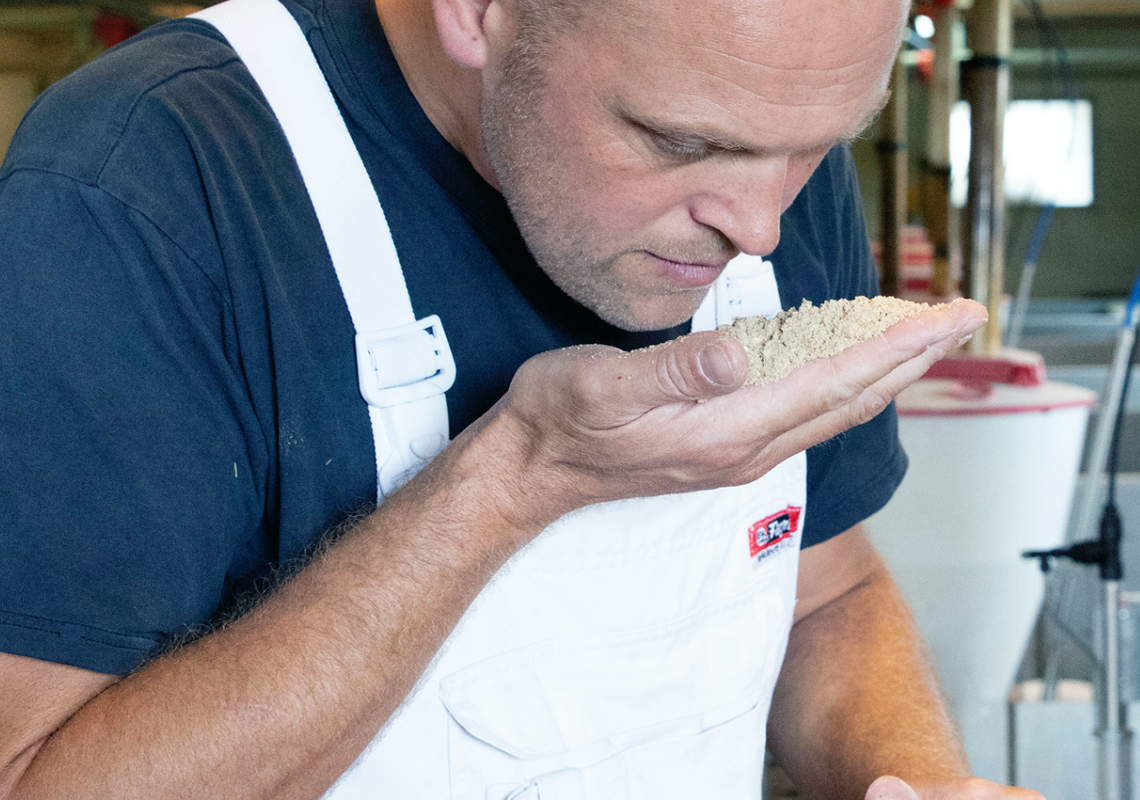Speed matters when it comes to protein: HP 300 is the fastest vegetable protein source on the market
The faster a protein source is digested and absorbed the faster it becomes available for the animals. Research now shows that faster protein ingredients are also better used for growth and performance than slower ingredients which means less protein is wasted. The same research shows that the fast hydrolysis of HP 300 matches most animal proteins and outperforms all other vegetable protein sources.
What is Protein Kinetics?
Protein Kinetics refers to the dynamics of protein digestion including the location and speed of the absorption of amino acids from the lumen of the small intestine.
It considers the speed of the digestive process, the site of nutrient digestion and the post-prandial bioavailability of amino acids. The protein kinetics are more indicative of feed efficiency and protein deposition than the extent of digestibility per se. Digestibility is usually used when protein ingredients are evaluated. However, the digestibility coefficient does not say anything about absorption speed.

Figure 1: Percentage of digested protein in different parts of the digestive tract.
Why is protein kinetics important?
The quicker a protein can be digested and absorbed the quicker it becomes bioavailable and the more of the protein is going to be used. Fast absorbable protein ingredients improve nitrogen retention and feed efficiency. The rate of protein hydrolysis, the consequent rate of amino acid absorption and the synchronization with amino acids from other protein sources are especially important in young animals.
Faster protein hydrolysis increases the protein availability for tissues, milk, and organs, and ultimately results in increased protein deposition, lower FCR, reduced nitrogen excretion into the environment and less protein fermentation in the hindgut.
HP 300: The only vegetable plasma on the market
Young animals have a requirement for fast protein as this enables them to use more of the protein for deposition. Furthermore, when supplementing diets with synthetic amino acids, the absorption of all the amino acids from the diet need to be synchronized with these synthetic amino acids not to lose efficiency.
A fast protein source allows for good synchronization in the absorption of amino acids. Hamlet Protein produces the fastest vegetable protein source which is also almost free of the most important anti-nutritional factors.
The Hamlet Protein portfolio outperforms all vegetal protein sources when it comes to kinetics and is also on par with the animal proteins like whey protein, blood plasma and fish meal. HP300 is therefore the only vegetable plasma and a cost-efficient alternative to animal proteins.

Vegetable plasma is a vegetable alternative to animal protein such as spray-dried plasma (SDP) in animal diets
Vegetable plasma is used in stages of life where high digestible ingredients are needed, for instance in the diets of young animals that do not yet have full digestive capacity.
It can be used in swine, poultry, pet, and aqua diets. It is called vegetable plasma because it has very similar properties as plasma; high digestibility, fast protein, low in ANF’s, but with the benefit of being a vegetable alternative and thus safe to use. It is made from enzyme treated soybean meal and is called HP300.
Vegetable plasma in the form of HP300 can be used as a replacement for animal proteins like blood plasma, fish meal or whey proteins in diets for swine, poultry, pet -and aqua species. It is a cost-effective alternative to animal proteins. Vegetable plasma can also be used when biosecurity is a concern. As it is made from enzyme treated soybean meal there is no risk of disease transfer when using HP300. Vegetable plasma can also be used as an all-vegetable alternative for animal proteins when the use of animal proteins is not acceptable.

Figure 2. Percentage of protein that is hydrolyzed very fast (within 30 minutes) in vitro. Note: SBM=soybean meal; SPC=soy protein concentrate; FSBM=fermented soybean meal; SDP=spray-dried plasma.
Vegetable plasma benefits
- Vegetable plasma contains almost no ANF’s: Replacing animal proteins with HP 300 does not increase the level of antinutritional factors (ANF’s) in the diet.
- Vegetable plasma is a fast digestible protein source like SDP and whey protein are: Replacing whey protein and SDP HP 300 ensures equally fast protein digestion.
- Vegetable plasma delivers high growth performance: Replacing animal protein with HP 300 results in similar growth.
- Vegetable plasma is more economical than most animal proteins: Replacing animal protein like whey protein and SDP with HP 300 reduces total feed costs.
HP 300 is vegetable plasma
Vegetable plasma can equal growth performance of spray-dried plasma (SDP). HP 300 is often referred to as ‘vegetable plasma’ due to the unique characteristics that closely resemble those of SDP:
- consistent and very low level of ANFs
- high digestibility
- very fast protein kinetics
- high palatability

Product benefits
Feed is the critical factor in animal production, accounting for up to 70% of total costs. Using HAMLET PROTEIN specialty soy proteins in young animal feed, you can optimize feed efficiency – and maximize your return on investment.
The key is their easy absorption by immature guts. Although added to feed for only a limited period in early life, our proteins have a strong carry-over effect on animal growth and performance. Feeding trials have documented a higher slaughter weight compared to animals fed standard soybean meal.
Our highly bioavailable proteins improve feed quality overall. That paves the way to reducing the total protein content – cutting the cost of your formulation.

